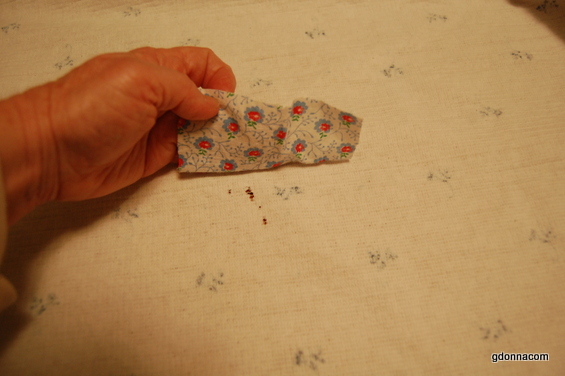
I took a look at what I was doing this time of year last year and I was mending and patching tablecloths....
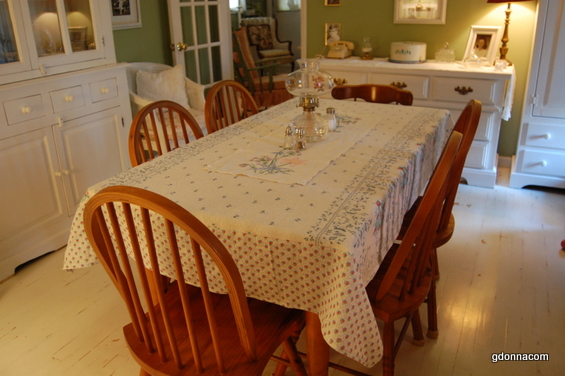
This is the one that I patched and added flour sack cloth to the sides to make it fit the table.
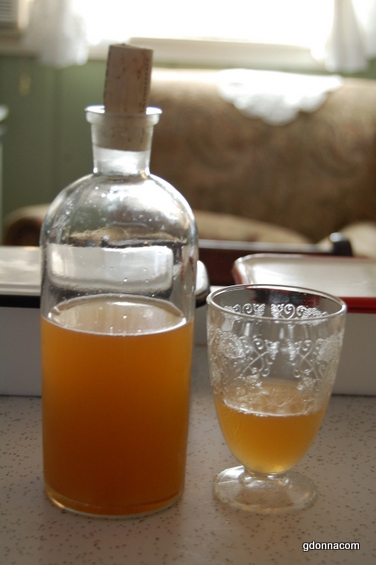
I did an article about switchel...

I was also planning for the spring garden...
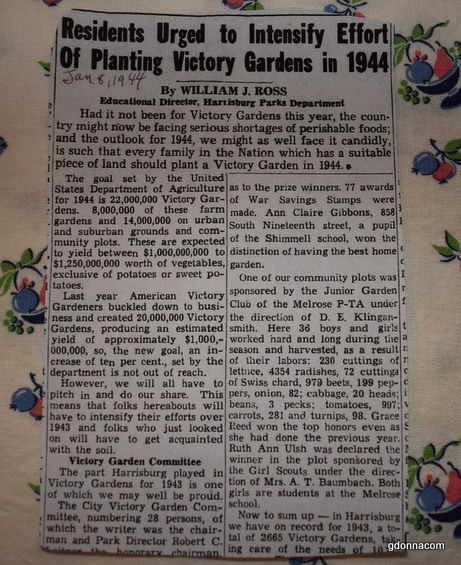
What was going on at this time of year in 1944 was people were being urged to step up on their victory gardens. This article above is a very interesting article for me to share with you for our history project living like 1944.
The community of Harrisburg Pennsylvania was one of the many communities around the united states that helped to grow food during the war by encouraging their citizens to grow victory gardens. This article below was about what Harrisburg did during this time.
Jan 8 1944
Had it not been for Victory Gardens this year, the country might now be facing serious shortages of perishable foods; and the outlook for 1944, we might as well face it candidly, is such that every family in the Nation which has a suitable piece of land should plant a Victory Garden in 1944.
The goal set by the Untied States Department of Agriculture for 1944 is 22,000,000 Victory Gardens. 8,000,000 of these farm gardens and 14,000,000 on urban and suburban grounds and community plots. These are expected to yield between $1,000,000,000 to $1,250,000,000 worth of vegetables, exclusive of potatoes, or sweet potatoes. Last year American Victory Gardeners buckled down to business and created 20,000,000 Victory Gardens, producing and estimated yield of approximately $1,000,000,000 so, the new goal, an increase of ten percent, set by the department is not out of reach.
However, we will all have to pitch in and do our share. This means that folks hereabouts will have to intensify their efforts over 1943 and folks who just looked on will have to get acquainted with the soil.
Victory Garden Committee
The part Harrisburg played in Victory Gardens for 1943 is one of which we may well be proud.
The city Victory Garden Committee, numbering 28 persons, of which the writer was the chairman and park Director Robert C. Leitner the honorary chairman, was composed of Harrisburg residents with one exception, that being the county farm agent who lives just outside the city limits, did a man-sized job in such a way as to earn the plaudits of all our citizens.
This committee worked (and we mean worked) long hours without complaint. One member, Ross C Mountz, actually allocated 131 gardens from a sick bed in one of our local hospitals.
To assist and educate our citizens a special series of 44 Victory Garden notes were written and edited. The first of these appeared in the Harrisburg Telegraph on December 26, 1942. Beginning on February 11, 1943 and continuing on through April 16, 1943, 31 radio broadcasts, dealing solely on phases of vegetable gardening, were presented. Also beginning on February 11 and on through April 28, 1943, 25 public addresses were given before group meetings. In co-operation with the United States Department of Agriculture, the County Farm Bureau, one of our city's leading banks and a nationally known oil company some 5000 pieces of literature were distributed. Thousands of letters and telephone calls were acknowledged and answered. Adult Victory Gardens
We have on record 2429 Victory Gardens created by adults 2233 of these in community plots and 236 created on home lots. 11,094,486 square feet of ground were utilized (not a square inch of valuable park lands was plowed under) and the total number of persons benefiting from these gardens was 10,041.
The amount of produce grown represented 397 tons of vegetables valued at $121,350. A partial breakdown shows that Harrisburg Victory gardeners grew
1,050 BU. Onion
290 BU Radishes
520 BU Peas
460 Bu Lettuce
670 BU Carrots
870 BU Beets
610 BU Peppers
2,960 BU String Beans
800 Bu Lima Beans
9,520 BU Tomatoes
1,340 BU Potatoes
33,330 BU Heads of Cabbage
9,640 Dozen ears of corn
Plus great quantities of spinach, eggplant, mustard greens, parsnips, brussels sprouts, pumpkins, squash, parsley and sweet potatoes. They had not only plenty of fresh vegetables for table use during the summer but canned 195,440 quart jars of vegetables for winter use.
Junior Victory Gardens
In the hustle and bustle attending the plowing, measuring, staking and allotting the above record number of adult victory gardens, we did not forget our work with junior victory gardeners. We had 236 of these. 51 in community plots and 185 on home grounds.
The youthful home gardeners grew most everything from early onions, radishes, the range of leafy vegetables to pumpkins, peanuts, cucumbers and coffee plants.
We were amazed at the all season interest shown by the youngsters as well as the attention and care given by them to their little gardens.
I will not type out the rest of the article as it is only recording more pounds of food and such as that.
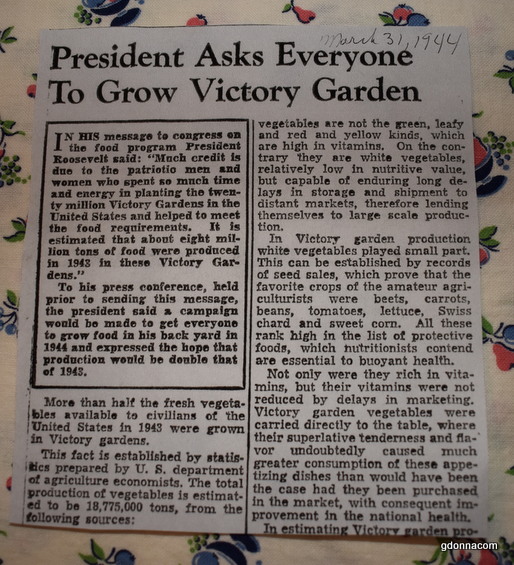
There are many articles about Victory gardens, all the same about the pulling together of the people to plant vegetables anywhere they could find a space.

The most useful ones are the ones with advice what to do.
Here is one shown above I will type out.
A seed flat is useful in the Victory garden throughout the year. In hot, dry summer weather it is often very difficult to obtain good germination from seeds of lettuce, endive, kohlrabi, and some others sown in the garden.
This is as difficult in rainy weather as in dry, when the soil is somewhat heavy, because rains compact the soil over the seed, the heat bakes it, and the seed sprouts cannot emerge.
But a seed flat can be filled with sandy loam, placed in a shady spot, and easily kept moist, so that seeds will germinate as easily as in the spring. By allowing the plants to reach a good size in the flat, they can usually be transplanted to the garden with small loss, and your second and third crops proceed to grow on schedule.
Many gardeners feel that it is easier to transplant lettuce and endive from a flat to the garden row, than it is to thin out the row when the seed is sown in the open. By sowing your flat a week or two before the previous crop is exhausted, no time is lost in spite of the check in growth caused by transplanting.
For the seed flat used outdoors in midsummer, some method of automatic watering is ideal, since otherwise it is necessary to soak the flat daily, or even twice a day. The thick watering method gives excellent results when the flat is placed above a pan sufficiently large to supply water for two or three days. The wick which may be a piece of clothes line, passing through a hole in the bottom of the flat, has its top frayed and embedded in the soil which fills the box; and its bottom drops into the pan below the box, which is kept full of water.
As long as there is water in the pan below, the soil in the box will keep moist, By varying the height of the box above the pan, the degree of moisture may be controlled. When seeds have been sown, the box may be set in shady place until they germinate and afterwards they can be given full sun or partial shade, according to the weather and time of year, whichever may give the seedling plants the best conditions in which to develop.

I think you should be able to read this one above.
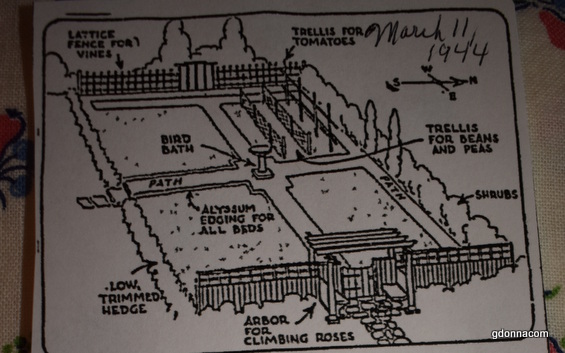
This was an article for those that were concerned about their property not being attractive and how to make a victory garden attractive.
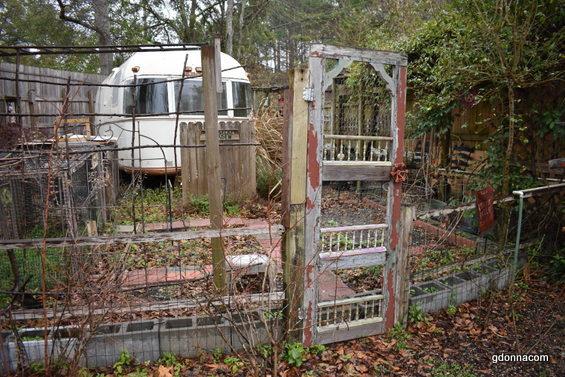
So I look out to our sad winter victory garden...
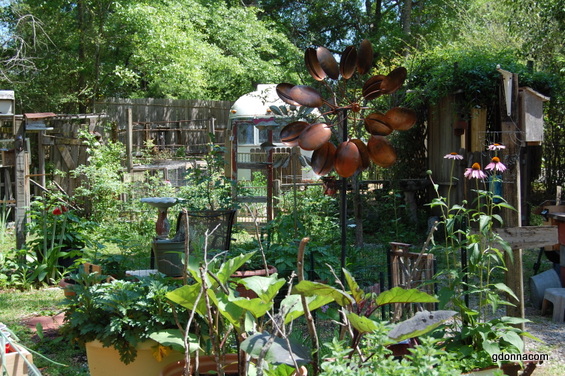
But all I have to do is look at the pictures from last year and know that when the weather warms the potential is there for another harvest.
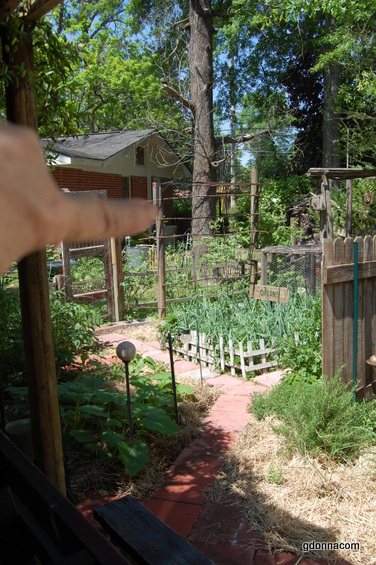
Where I am pointing is where the new cucumber arbor was and boy did we harvest many cucumbers from that arbor.
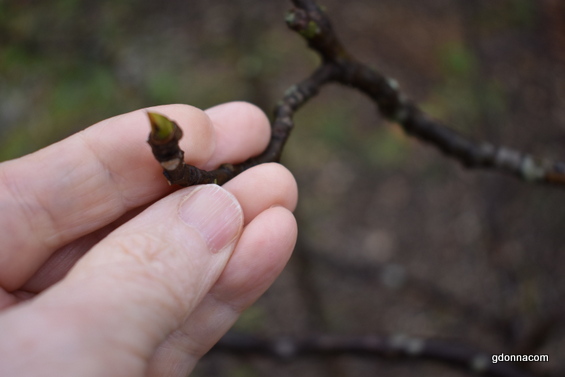
I am noticing signs of spring, tips of the fig tree...

Tips of the blueberry bushes... I just want them to be patient because last year we had an unexpected freeze after the blueberries bloomed out..
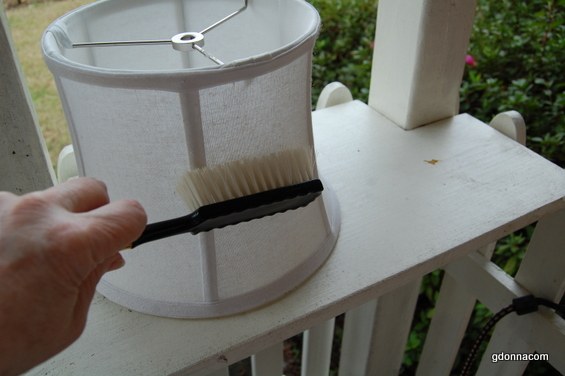
Last year before it was time to plant I did some early spring cleaning....

I cut some flowered socks to make garden sleeves....
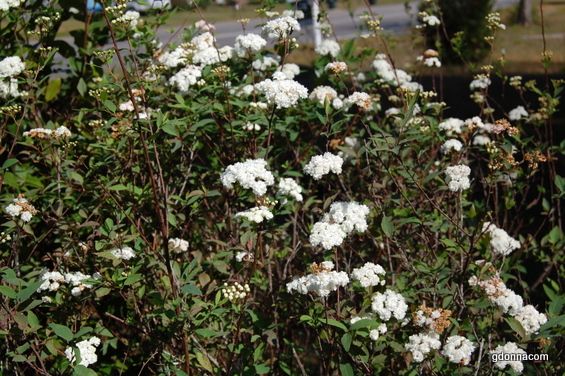
And I waited for the bridles wreath to bloom and other signs it was time to plant.
I am getting older, my back is being cantankerous and it is not as easy to garden as it once was but by golly I am going to give it a try because we "Need" that Victory Garden!!
Grandma Donna


